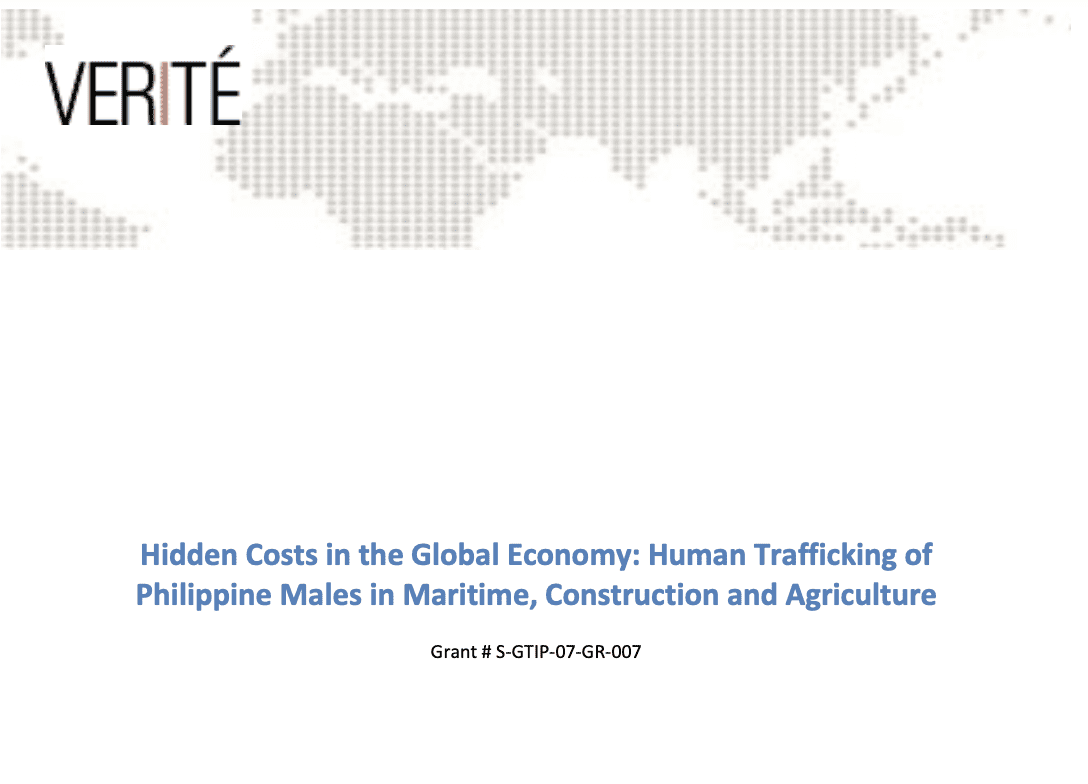
Hidden Costs in the Global Economy: Human Trafficking of Philippine Males in Maritime, Construction and Agriculture
Introduction
One of the greatest “exports” of the Philippines is manpower. The Philippines has been a source of male workers for almost all parts of the world, particularly the Middle East, Hong Kong, Singapore, Japan, North America, and Europe. However, certain workforce mechanisms and policies in these developed countries exploit the vulnerabilities of male Filipino workers (OFWs) overseas. The working conditions in these developed countries, combined with the Filipino workers’ significant lack of education on relevant topics, results in migrant workers falling prey to unscrupulous employers and human traffickers. Many of these OFWs are promised jobs that often entail exploitation, violence, poor working conditions, and offer little hope for improvement.
Little is known about the trafficking of Filipino men. In the Philippines, as in other countries, the focus of anti-trafficking policy, research, and law enforcement has been almost exclusively on women and children victims, and consequently, more information is known on the industries and destinations into which women and children are often trafficked. Notably, in the last five years, Philippine media organizations have consistently carried reports of male overseas Filipino workers (OFWs) subjected to various exploitative and distressed situations. However, only recently have these situations been explicitly labeled as cases of trafficking. Despite the media mileage and the growing awareness and activism on human trafficking here and abroad, there remains a deep deficit of understanding with respect to male victims of human trafficking; the circumstances that lead to their being trafficked; and the places, sectors, or industries where the exploitation takes place.
This discrepancy with respect to attention on male victims of human trafficking has begun to be recognized by policymakers and researchers. At the same time, the operational definition of human trafficking is being slowly expanded to encompass various modes of exploitation of migrant workers, including the exploitation of workers migrating legally under their own will for legitimate forms of employment.
Several international organizations have published reports exploring the issue of male human trafficking, in response to the dearth of available studies. Some of these reports show that men are vulnerable to human trafficking and exploitation in ways distinct from women, and that men may be less likely to report and talk openly about experiences of exploitation.
Although Philippine anti-trafficking laws are constructed in a way that recognizes women, children and men as victims, available government databases reveal that very few cases involving male victims of labor trafficking are ever formally filed for litigation in court. Of the 12 convictions in 2006, when this research project was being conceptualized, none of these cases involved trafficking of men. Moreover, according to the 2009 Trafficking in Persons (TIP) Report, there have been no reported labor trafficking convictions, despite extensive reports on Filipinos trafficked for forced labor domestically and across borders.
Both the large numbers of Philippine males employed abroad, and the known labor violations among migrant workers employed in various types of work that are characteristically male, make the plight of male Philippine trafficking victims ripe for exploration.
Read more here.
